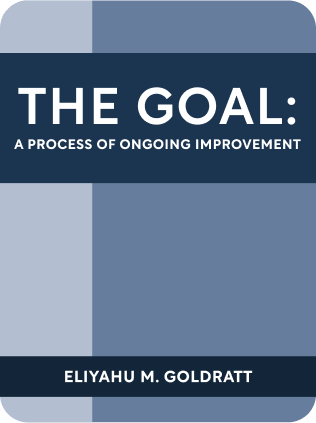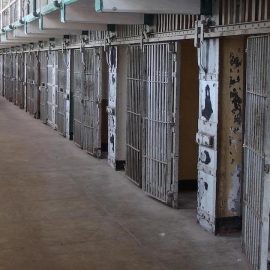

This article is an excerpt from the Shortform book guide to "The Goal: A Process of Ongoing Improvement" by Eliyahu M. Goldratt. Shortform has the world's best summaries and analyses of books you should be reading.
Like this article? Sign up for a free trial here .
What business performance metrics matter? Are there key business metrics that The Goal suggests focusing on?
Business performance metrics help you make sure your company is on track, profitable, and meeting objectives. Key business metrics in The Goal focus on productivity and profitability.
Read on for more about the business performance metrics addressed in The Goal.
The Goal and Business Performance Metrics
Productivity is bringing a company closer to its goal.
- Every action that brings a company closer to its goal is productive.
- Every action that does not bring a company closer to its goal is not productive.
Defining the Goal is critical. The Goal of every business is to make money. Without money, the company is dead. So, profitability is one of key business metrics (or the most important one).
- Do not deceive yourself into picking one of the business performance metrics that is a subgoal – like decreasing cost per part, employing good people, manufacturing efficiency, product creation, quality, satisfaction, cutting-edge technology, market share. None of this matters unless it meets the Goal.
- Be wary of separate departments overoptimizing their subgoals without meeting the main goals. Like purchasing being more cost-effective and renting warehouses to store excess inventory, which can make the whole company less profitable.
If you improve efficiency at one step without increasing overall output, you are not being more productive. You might even be causing an excess inventory and increasing cost per good sold.
- For example, imagine if you added a robot at one part of the assembly line. To justify the cost, you drive it at max capacity, which requires feeding it a lot of upstream supply, and also causes downstream accumulation. The cost-per-part at that step is low, but the system overall suffers, and cost per output actually increases.
What is the minimum number of business performance metrics you need to know if you’re making money?
- Net profit (the more positive the better)
- ROI (relative, to tell what the base is)
- Cashflow (to make sure the company stays alive)
How do you convert these highest-level business performance metrics to ones that are more actionable day-to-day?
- Throughput: the rate at which the system generates money through sales
- Inventory: the money the system has invested in purchasing things to sell
- In other words, this is money that is currently stuck in the system
- Any investment that you can sell is inventory.
- R&D that can be sold, like a patent, is inventory. In contrast, R&D to improve throughput can’t be sold and isn’t inventory.
- Operational Expense: the money the system spends in order to turn inventory into throughput
- Includes labor, leases, R&D to improve throughput
- It’s better not to consider where value is added – don’t get caught up over whether a dollar is investment or expense. If it’s not part of the packaged product being sold, it’s an operational expense.
- Ideally, you should try to improve all three at once.
- For example, if you install robots, it should increase throughput by increasing sales, decrease inventory needed, and/or reduce labor costs.
- Be wary of a change that affects only one of these metrics – there may be second-order effects that backfire.
- For example, reducing labor to reduce operational expense may decrease throughput.
If you make a subpart more efficient, you do not raise your competitive advantage if it does not increase output or reduce cost. Here are more business performance metrics related to that concept.
- Adding robots to improve step efficiency, without reducing workers or increasing output/sales, does not increase profits.
- “Economies of scale” can be deceptive when you focus on a narrow substep, like cost per part. The real metrics to care about are total products produced and cost per product; increasing efficiency at one step may aggravate the other steps.
- Fallacy: “we have to run our robots constantly, otherwise we’d lose our savings on cost per part and efficiencies go down.” This increases inventories and operational expense, because the parts pile up at the bottleneck.
Says the mentor in The Goal: “A plant in which everyone is working all the time is very inefficient.” There must be a bottleneck along the chain; idling the rest of the chain prevents inventory from piling up.

———End of Preview———
Like what you just read? Read the rest of the world's best book summary and analysis of Eliyahu M. Goldratt's "The Goal: A Process of Ongoing Improvement" at Shortform .
Here's what you'll find in our full The Goal: A Process of Ongoing Improvement summary :
- How to increase your personal output
- How to increase your team's output
- Why obsessing over cost efficiency isn't going to help you with production






